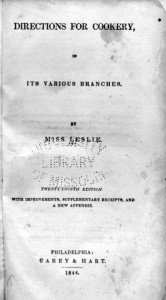 Don't miss the Food Sense symposium this weekend! This is our last Friday Food post. Eliza Leslie (1787–1858) aspired to be a poet or novelist, but she is best remembered today for her cookbooks. In 1828, Leslie published her first book, Seventy-Five Receipts for Pastry, Cakes and Sweetmeats, a collection of recipes she had developed as a cooking school student. Encouraged by its popularity, she went on to publish at least six more titles and established a reputation as the most popular and influential food writer in America. Directions for Cookery (1837) is considered her most important work.
Don't miss the Food Sense symposium this weekend! This is our last Friday Food post. Eliza Leslie (1787–1858) aspired to be a poet or novelist, but she is best remembered today for her cookbooks. In 1828, Leslie published her first book, Seventy-Five Receipts for Pastry, Cakes and Sweetmeats, a collection of recipes she had developed as a cooking school student. Encouraged by its popularity, she went on to publish at least six more titles and established a reputation as the most popular and influential food writer in America. Directions for Cookery (1837) is considered her most important work.
Leslie was famous for popularizing distinctly American foods, as the following recipe from Directions for Cookery shows. Her Indian Meal Book (1846) was the first cookbook devoted entirely to corn.
Green Corn Pudding
Take twelve ears of green corn, as it is called, (that is, Indian corn when full grown, but before it begins to harden and turn yellow,) and grate it. Have ready a quart of rich milk, and stir into it by degrees a quarter of a pound of fresh butter, and a quarter of a pound of sugar. Beat four eggs till quite light; and then stir them into the milk, &c. alternately with the grated corn, a little of each at a time. Put the mixture into a large buttered dish, and bake it four hours. It may be eaten either warm or cold, for sauce, beat together butter and white sugar in equal proportions, mixed with grated nutmeg.
To make this pudding,—you may, if more convenient, boil the corn and cut it from the cob; but let it get quite cold before you stir it into the milk. If the corn has been previously boiled, the pudding will require but two hours to bake.
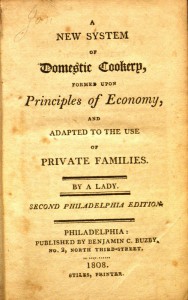 Maria Eliza Rundell (1745–1828) didn’t set out to be a domestic goddess. The widow of a surgeon, she collected recipes and household hints for her three married daughters. John Murray, a prominent publisher, happened to be a family friend, and Rundell gave him her recipe collection as a favor, expecting no financial reimbursement.
Maria Eliza Rundell (1745–1828) didn’t set out to be a domestic goddess. The widow of a surgeon, she collected recipes and household hints for her three married daughters. John Murray, a prominent publisher, happened to be a family friend, and Rundell gave him her recipe collection as a favor, expecting no financial reimbursement.

 Food Revolutions is now on view in the Ellis Library Colonnade. From the four humors to the discovery of vitamins, this exhibition examines our changing notions of healthy eating over two centuries. Food Revolutions brings together medical books, cookbooks, scientific publications, and dieting texts to illustrate our ongoing quest for health, and our changing relationships with food.
Food Revolutions is now on view in the Ellis Library Colonnade. From the four humors to the discovery of vitamins, this exhibition examines our changing notions of healthy eating over two centuries. Food Revolutions brings together medical books, cookbooks, scientific publications, and dieting texts to illustrate our ongoing quest for health, and our changing relationships with food.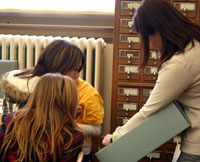 Lena Sheets has a master's degree in education and teaches world cultures at
Lena Sheets has a master's degree in education and teaches world cultures at 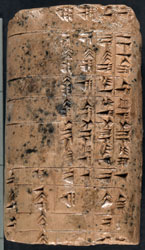
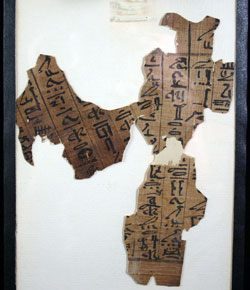 Any additional comments or suggestions?
Any additional comments or suggestions?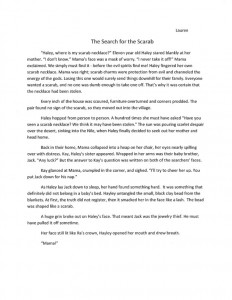
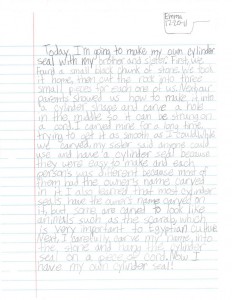

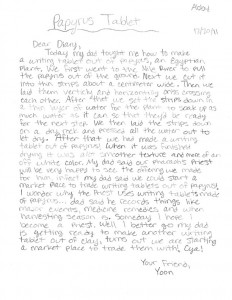
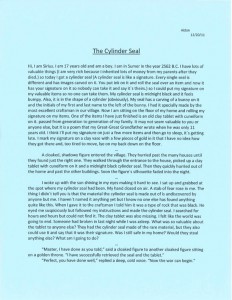


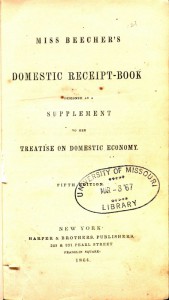 Catharine Beecher (1800-1878), the sister of the abolitionist Harriet Beecher Stowe, was an early feminist and advocate of women’s education. Beecher was at the forefront of the home economics movement in the nineteenth century. She sought to increase the status of traditional women’s work such as cooking and childcare, arguing for its value to society and the need for female education to inform this work.
Catharine Beecher (1800-1878), the sister of the abolitionist Harriet Beecher Stowe, was an early feminist and advocate of women’s education. Beecher was at the forefront of the home economics movement in the nineteenth century. She sought to increase the status of traditional women’s work such as cooking and childcare, arguing for its value to society and the need for female education to inform this work.

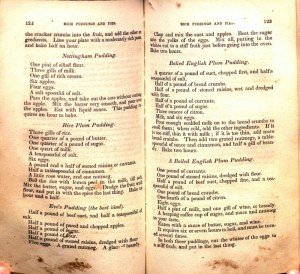
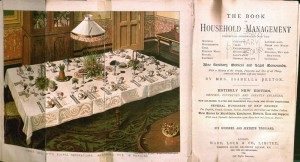 As the oldest girl in a family of twenty-one children, Isabella Mayson (1836–1865) had ample practice in the domestic arts by the time she married Samuel Beeton at the age of 20. Samuel was an innovative editor and publisher, and Isabella participated fully in his publishing business, putting her domestic skills to work as editor of the English Woman's Domestic Magazine. The year after her marriage, Isabella also began work on the monumental compendium of domestic science that is The Book of Household Management. The book was first published it in 1861, when Isabella was only 25, and it was an immediate success due to her attention to accuracy, economy, and taste.
As the oldest girl in a family of twenty-one children, Isabella Mayson (1836–1865) had ample practice in the domestic arts by the time she married Samuel Beeton at the age of 20. Samuel was an innovative editor and publisher, and Isabella participated fully in his publishing business, putting her domestic skills to work as editor of the English Woman's Domestic Magazine. The year after her marriage, Isabella also began work on the monumental compendium of domestic science that is The Book of Household Management. The book was first published it in 1861, when Isabella was only 25, and it was an immediate success due to her attention to accuracy, economy, and taste.
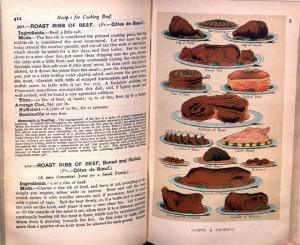
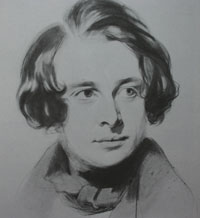 Charles John Huffam Dickens was born on this date in 1812. Dickens, one of the most famous and most belov
Charles John Huffam Dickens was born on this date in 1812. Dickens, one of the most famous and most belov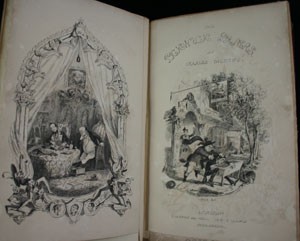 ed of all English novelists, created some of the most powerful characters in fiction. He is known all over the world, and, unlike most great authors, he was rock-star famous in his own time. He moved around a lot as a child and was forced to quit school at twelve years old to work in a factory. Those early memories, however, would later inspire settings both fantastic and real; characters both legendary and sympathetic.
ed of all English novelists, created some of the most powerful characters in fiction. He is known all over the world, and, unlike most great authors, he was rock-star famous in his own time. He moved around a lot as a child and was forced to quit school at twelve years old to work in a factory. Those early memories, however, would later inspire settings both fantastic and real; characters both legendary and sympathetic.
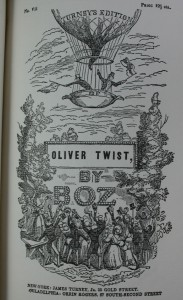 Sketches by Boz, The Pickwick Papers, Oliver Twist, Nicholas Nickleby, The Old Curiosity Shop, Barnaby Rudge, and American Notes.
Sketches by Boz, The Pickwick Papers, Oliver Twist, Nicholas Nickleby, The Old Curiosity Shop, Barnaby Rudge, and American Notes.
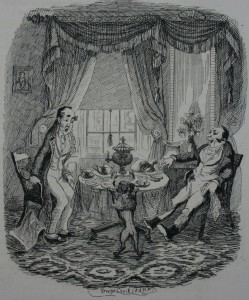 The first of these pairings was with George Cruikshank, a popular cartoonist at the time. The author and illustrator became great friends, though their relationship soured due to many factors including Cruikshank’s growing obsession with the Temperance movement.
The first of these pairings was with George Cruikshank, a popular cartoonist at the time. The author and illustrator became great friends, though their relationship soured due to many factors including Cruikshank’s growing obsession with the Temperance movement.

 Knight Browne worked with Dickens for over 23 years. He adopted the nickname Phiz to complement Dickens’ Boz.
Knight Browne worked with Dickens for over 23 years. He adopted the nickname Phiz to complement Dickens’ Boz.
 “No other illustrator ever created the true Dickens characters with the precise and correct quantum of exaggeration.”
“No other illustrator ever created the true Dickens characters with the precise and correct quantum of exaggeration.”
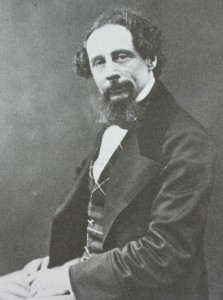 Celebrate his 200th birthday by dropping by Special Collections in Ellis Library to read the stories as Dickens so meticulously intended. We have many of his greatest works, some beautifully bound, dating from the beginning of the author’s literary career. Experience what created this pop sensation first-hand!
Celebrate his 200th birthday by dropping by Special Collections in Ellis Library to read the stories as Dickens so meticulously intended. We have many of his greatest works, some beautifully bound, dating from the beginning of the author’s literary career. Experience what created this pop sensation first-hand!
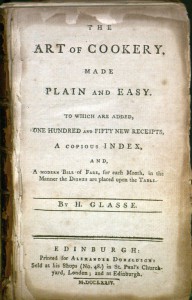 In March,Special Collections, Archives and Rare Books will be participating in
In March,Special Collections, Archives and Rare Books will be participating in 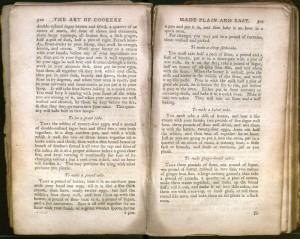
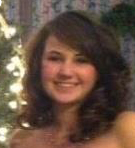 Jennifer Para is a freshman from Rogers, Arkansas, majoring in business. As part of
Jennifer Para is a freshman from Rogers, Arkansas, majoring in business. As part of 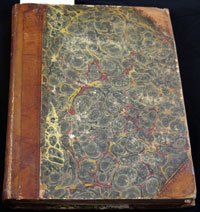 Glancing through rare books at Ellis Library, a certain leather bound novel with a delicate design imprinted into the spine catches your eye. The marbled paper cover reminds you of exquisite stones with white and gold specks reflecting the bouncing sun, meshed together in a pond of blood. Touching the book, you are surprised at its smoothness, and you wonder why the book does not fall apart at your caress. On the book’s spine you notice gold lettering revealing the title of the book: Aeneidos. This epic poem is a 1583 copy of Phaer and Twyne’s translation of Virgil’s Aeneid.
Glancing through rare books at Ellis Library, a certain leather bound novel with a delicate design imprinted into the spine catches your eye. The marbled paper cover reminds you of exquisite stones with white and gold specks reflecting the bouncing sun, meshed together in a pond of blood. Touching the book, you are surprised at its smoothness, and you wonder why the book does not fall apart at your caress. On the book’s spine you notice gold lettering revealing the title of the book: Aeneidos. This epic poem is a 1583 copy of Phaer and Twyne’s translation of Virgil’s Aeneid.
 teen you find the authors’ letter to their readers. Phaer and Twyne intended their translation of the Aeneid to be read by “maisters and students of universities,” who “will not bee too much offended,” by their raw translation, and “pray they will correct the errors escaped in the printing.”
teen you find the authors’ letter to their readers. Phaer and Twyne intended their translation of the Aeneid to be read by “maisters and students of universities,” who “will not bee too much offended,” by their raw translation, and “pray they will correct the errors escaped in the printing.”
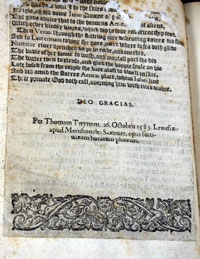 you see calligraphy and make out words “Hugh Bateman”, “Thomas Payne”, “1767 London”, “Dronfield”. Partaking in more research, you find record of several Hugh Batemans at Dronfield.
you see calligraphy and make out words “Hugh Bateman”, “Thomas Payne”, “1767 London”, “Dronfield”. Partaking in more research, you find record of several Hugh Batemans at Dronfield.